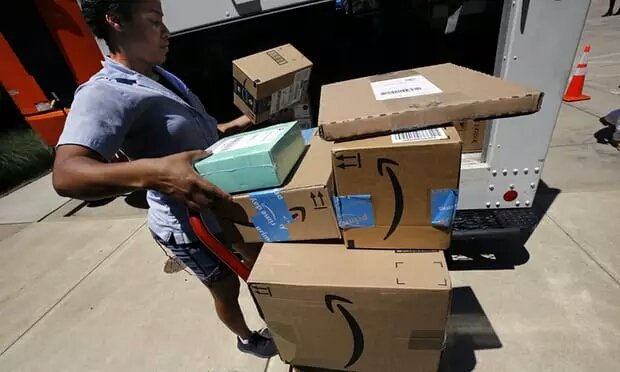
Amazon’s record profit was twice what analysts predicted. Photograph: Gene J Puskar/AP
Amazon posted a record profit of $2.5bn in the second quarter of 2018, thanks to strong performance by the retail giant’s non-retail divisions – advertising and cloud-computing, the company announced Thursday,
The favorable profit results, which were double analyst expectations, buoyed tech investors a day after weak growth saw Facebook’s market value plunged by $119bn, the single greatest one-day loss in US history.
Amazon’s shares were up more than 3% in after hours trading. The stock price has increased more than 50% since the start of the year. With a market capitalization of $877bn, the Seattle-based company is squarely in the race with Apple and Alphabet to be the world’s first trillion-dollar company.
Revenue grew 39% year over year to $52.89bn, which was slightly below analyst expectations. But any disappointment was tempered by the profit result, which was an astounding 1,286% increase from the second quarter of 2017.
On a conference call with investors, Brian Olsavsky, the company’s chief financial officer, attributed the quarter’s success to accelerating growth in Amazon’s “most profitable areas”, particularly the cloud-computing division, Amazon Web Services (AWS).
Olsavsky also pointed to the company’s advertising products as contributing to gross profit while “growing at a rapid clip”.
Amazon’s results reveal the degree to which it has benefited from selling products unrelated to its original e-commerce business. The company drew $1.64bn in operating income off $6.1bn in AWS revenues, compared to $1.83bn in operating income off $32.1bn in North American net sales.
Internationally, Amazon had an operating loss of $494m. Olsavsky noted that Amazon had improved margins in Europe and Japan but remains in “a period of investment” abroad, especially in India.
Amazon’s results announcement drew attention to the extraordinary breadth of the company’s activities, from its 22 Emmy nominations for Amazon Prime Video original programming to its expansion of Prime benefits to shoppers at Whole Foods Markets.
“As Prime members increasingly scan their mobile apps to get discounts, Amazon is collecting more data about consumers’ grocery purchase habits,” said Patricia Orsini, an analyst for eMarketer. “This will help Amazon not only to curate product selection in-store, but it will give them better insights into what online shoppers might buy.”
The increased cost of Amazon Prime, announced at the end of the last quarter, did not appear to damage subscription revenues, which grew 57% to $3.4bn.
Amazon also touted the success of its bespoke holiday, “Prime Day”, which was hampered this year by a website outage. The company nevertheless managed to sell 100m products on 16 July, making it “Amazon’s biggest global shopping event ever”.
Though Amazon’s financial results and forecasts are decidedly more optimistic than Facebook’s were, the company has not entirely evaded the increased political scrutiny currently facing the US’s major technology companies.
Earlier on Thursday, the company was hit with criticism from members of Congress over AWS’s sale of facial recognition tools to law enforcement agencies.
And both Amazon and Bezos remain a favorite target of Donald Trump, who most recently threatened the company with an antitrust investigation on Monday.
Hi! I am a robot. I just upvoted you! I found similar content that readers might be interested in:
https://www.theguardian.com/technology/2018/jul/26/amazon-profit-second-quarter-2018-advertising-cloud